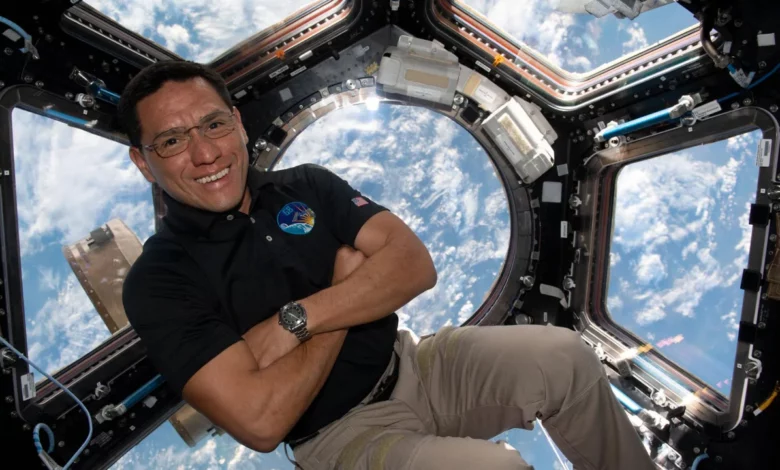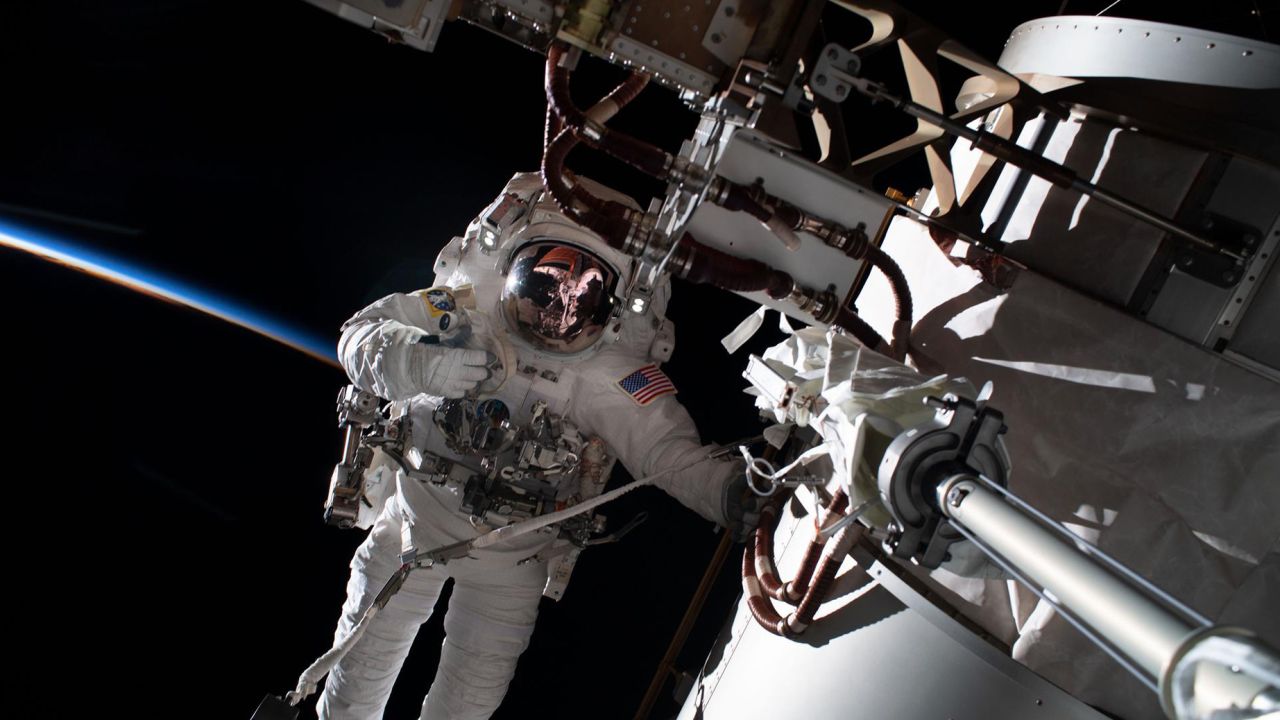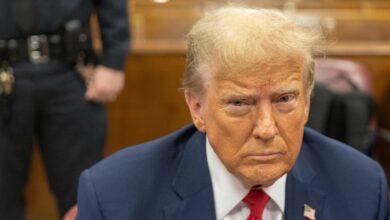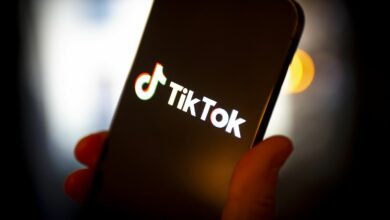
Rubio — who has been on the International Space Station since September 2022 — bested the previous record, held by retired NASA astronaut Mark Vande Hei, at 1:40 p.m. ET on Monday, according to a spokesperson for the space agency.
What’s more, Rubio is on track to reach another significant milestone in a few weeks’ time. A Russian Soyuz capsule is not expected to return him and his two fellow crewmates — cosmonauts Sergey Prokopyev and Dmitri Petelin — to Earth before September 27.
That means Rubio will have spent at least 371 days in orbit once he completes his mission. He is on the cusp of becoming the first American to spend more than one calendar year in microgravity.
Yet Rubio’s mission was not originally designed to break records.
When Rubio left for the space station aboard a Russian Soyuz capsule on September 21, 2022, he and his crewmates believed they were carrying out a six-month mission. But the spacecraft that carried Rubio and his two Russian colleagues sprang a coolant leak in December. Officials at Roscosmos, Russia’s space agency, later deemed the spacecraft unsafe to carry the crew back home.
Instead, the Soyuz MS-22 capsule returned to Earth without a crew on March 28. And Roscosmos launched a replacement spacecraft, MS-23, that docked with the space station on February 25. Rubio’s return date was pushed back to September as Russia prepared the next Soyuz vehicle, which will launch with a new crew of two cosmonauts and one NASA astronaut as early as Friday.
To commemorate Rubio’s feat, he recorded a conversation with Vande Hei on September 5. NASA is expected to air the footage on Tuesday at 11 a.m. ET on its media channel.
“Rubio’s journey in space embodies the essence of exploration,” NASA administrator Bill Nelson said in a Monday statement posted on social media.
“As he breaks records as the longest serving @NASA US astronaut in space, he also paves the way for future generations of astronauts,” the statement reads. “Your dedication is truly out of this world, Frank!”

In the record books
If all goes to plan, and Rubio departs on September 27, his 371-day stay will not be a world record for the longest space mission. The late Russian cosmonaut Valeri Polyakov, who logged 437 continuous days in orbit aboard Russia’s Mir space station between January 1994 and March 1995, holds that title.
Vande Hei had set a new US record for the most consecutive days in space in 2022 after NASA and Roscosmos decided to extend his stay because Russia had sent a crew of two people to the space station to film a movie. Vande Hei’s return was delayed to allow for the additional traffic to the orbiting laboratory, though he said at the time that he had known his mission might be extended before he arrived.
Before Vande Hei, US astronaut Scott Kelly held the title for longest spaceflight by an American with his 340-day mission. That tour of duty was a planned extended mission, designed by NASA to study the long-term effects of spaceflight on the human body.
A Russian cosmonaut also holds the current record for the most cumulative days in space. Gennadi Padalka earned that title, besting another cosmonaut in 2015, by notching a total of 879 days over the course of five separate spaceflights.
The US record for the most accrued days in space is held by Peggy Whitson with a total of 675 days in orbit. Whitson, who retired from the NASA astronaut corps in 2018, has added to the record as recently as 2023. She now serves as a private astronaut for Axiom Space, which so far has hosted two commercial trips to the space station that have allowed paying customers to experience a trip to the orbiting laboratory alongside a veteran professional astronaut.
Getting to space
Rubio traveled to the space station on a Russian spacecraft as part of crew-swapping agreement between NASA and Roscosmos that was hashed out in the summer of 2022.
NASA officials assigned Rubio to ride aboard the Soyuz MS-22, while Roscosmos put cosmonaut Anna Kikina on a SpaceX Crew Dragon mission that took flight in October 2022 and returned home March 11.
Despite geopolitical tensions between the United States and Russia as the war in Ukraine escalated, NASA has repeatedly said its partnership with Roscosmos is vital to continuing the space station’s operations and the valuable scientific research carried out on board.
At the time the ride-sharing agreement was announced, NASA said in a statement that inking such a deal with Russia was crucial to ensure “continued safe operations” of the space station. If either the Russian Soyuz spacecraft or the SpaceX Crew Dragon capsule were to run into issues and be taken out of service, a seat-swap agreement would ensure that both US astronauts and Russian cosmonauts would still have access to the space station.
Roscosmos did not need to rely on a SpaceX capsule to replace the damaged Soyuz MS-22 crew ship, however, because the MS-23 spacecraft was prepared to fly and the coolant leak on the MS-22 vehicle did not necessarily point to possible issues with other Soyuz vehicles, officials noted.
Joel Montalbano, NASA’s International Space Station program manager, said during a news conference in July that Roscosmos had investigated the issue and found it was likely an “external force” that caused the leak, indicating a piece of orbital debris probably hit the spacecraft.
“A NASA team has also looked at it independent of the Russian team and we also cannot find anything — based on the information we’ve been given by our Russian colleagues — of anything other than some type of external force or debris or something else like that,” Montalbano said.
During his stay in space, Rubio has seen several crews of astronauts rotate through via SpaceX vehicles. Apart from the Axiom-2 crew that visited in May, the SpaceX Crew-6 astronauts have come and gone since Rubio’s arrival. And the Crew-7 group — which includes astronauts from NASA, Roscosmos, the Japan Aerospace Exploration Agency and the European Space Agency — arrived at the station in August.




